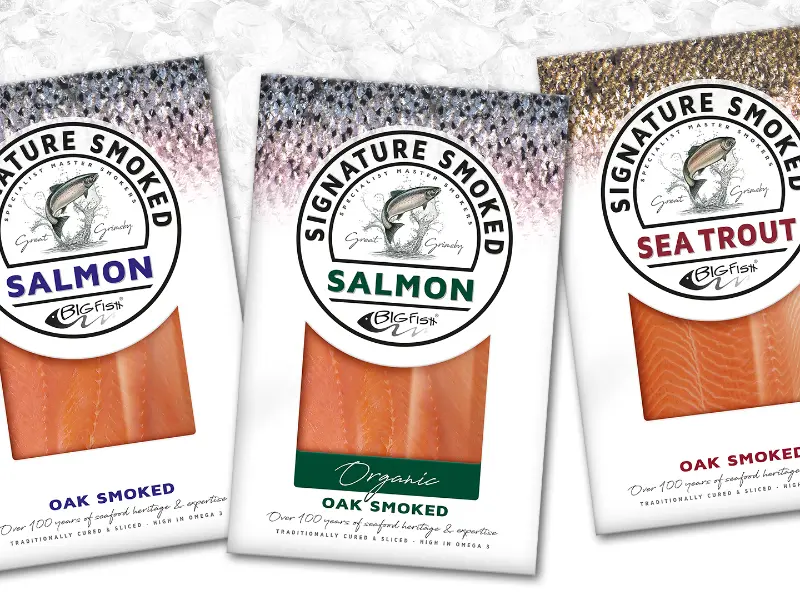When it comes to preserving the freshness and quality of dried and smoked fish, choosing the appropriate packaging material is crucial. The right packaging not only helps to maintain the flavor and texture of the fish but also ensures its safety during transportation and storage. In this article, we will explore the different packaging materials and techniques used for smoked fish, and how they contribute to its overall quality.
Importance of Proper Packaging
Proper packaging plays a vital role in extending the shelf life of smoked fish. It helps to protect the fish from external factors such as moisture, light, and air, which can lead to spoilage and loss of flavor. Additionally, good packaging also prevents cross-contamination and maintains the hygiene of the product.
Packaging Materials
There are several packaging materials that are commonly used for smoked fish:
- Flexible Plastic Packaging: Flexible plastic materials such as polyethylene and polypropylene are popular choices for smoked fish packaging. These materials provide a barrier against moisture and oxygen, ensuring the fish stays fresh for longer periods. They are also lightweight and cost-effective.
- Vacuum Packaging: Vacuum packaging involves removing air from the packaging before sealing it. This technique helps to extend the shelf life of smoked fish by preventing the growth of bacteria and other microorganisms. Vacuum-sealed packages also reduce the risk of freezer burn, making them ideal for long-term storage.
- Modified Atmosphere Packaging (MAP): MAP involves replacing the air in the packaging with a mixture of gases such as nitrogen, carbon dioxide, and oxygen. This technique helps to slow down the spoilage process and maintain the quality of the smoked fish. MAP is commonly used for smoked fish products that have a longer shelf life.
Packaging Techniques
In addition to the choice of packaging material, there are various techniques used to package smoked fish:
Hot Smoking
Hot smoking is a popular method of smoking fish, where the fish is exposed to smoke and heat simultaneously. To package hot smoked fish, it is important to let it cool down completely before packaging to avoid condensation. Once cooled, the fish can be placed in vacuum-sealed bags or flexible plastic packaging.
Cold Smoking
Cold smoking involves smoking fish at a lower temperature over a longer period. This method requires the fish to be cured before smoking. After smoking, the fish should be chilled before packaging. Vacuum-sealed bags or flexible plastic packaging are commonly used for cold smoked fish.
Combination Smoking
Combination smoking involves a combination of hot and cold smoking techniques. The fish is first hot smoked and then finished with a cold smoking process. Similar to hot and cold smoking, combination smoked fish should be cooled before packaging and can be packaged using vacuum-sealed bags or flexible plastic packaging.
Frequently Asked Questions
Can smoked fish be stored without packaging?
No, it is not recommended to store smoked fish without packaging. Packaging helps to protect the fish from external factors and maintain its freshness and quality.
How long does smoked fish last in packaging?
The shelf life of smoked fish depends on various factors such as the packaging material used, storage conditions, and the type of smoking technique. On average, properly packaged and stored smoked fish can last from several weeks to several months.
Can smoked fish be frozen?
Yes, smoked fish can be frozen to extend its shelf life. Vacuum-sealed packaging is especially effective for freezing smoked fish as it prevents freezer burn and maintains the quality of the fish.

Conclusion
Choosing the appropriate packaging material and technique for smoked fish is essential for maintaining its freshness, flavor, and quality. Whether it's flexible plastic packaging, vacuum packaging, or modified atmosphere packaging, each method has its advantages in preserving the fish's taste and prolonging its shelf life. By understanding the different packaging options available, producers and consumers can ensure that smoked fish reaches their tables in optimal condition.
If you want to know other articles similar to Smoked fish packaging: ensuring freshness & quality you can visit the Packaging category.


Related Articles